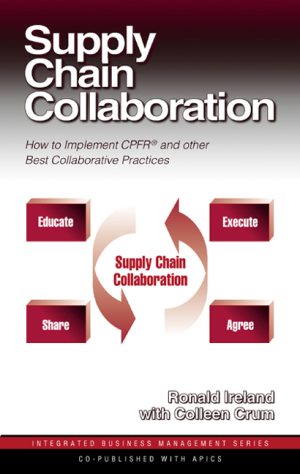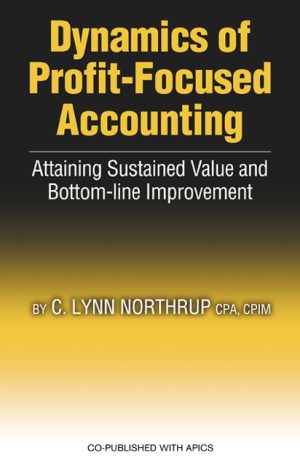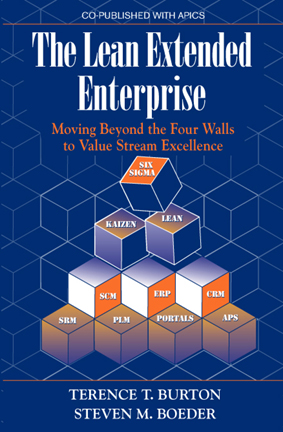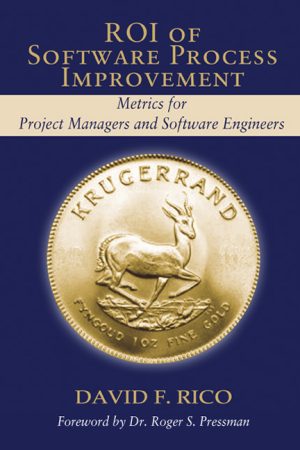Earned Value Management Using Microsoft® Office Project
$69.95
A Guide for Managing Any Size Project Effectively
By Sham Dayal, PMP
Softcover, 7.5 x 9.25, 248 pages
ISBN: 978-1-932159-98-1
September 2008
LEARN & EARN: Get 5.2 PDUs in the PMI skill area of Technical Skills
Includes a CD-ROM
Description
Schedule and cost management are the most essential parts of project lifecycle management and many projects fail as a result of not managing these critical components effectively. The most commonly used tool for project schedule management is Microsoft Office Project, which is designed to assist project managers in developing schedules, assigning resources to tasks, tracking progress, managing budgets and analyzing workloads. The most common technique used for cost management is earned value management (EVM), a project management technique used for measuring project progress in an objective manner that combines measurements of project scope, schedule and cost performance within a single integrated methodology. EVM is becoming the standard across the world for this purpose in both the private and public sector and many organizations are now adopting this technique to manage their projects. In the public sector, EVM is mandated for all government projects in the United States and many other countries are following suit.
Earned Value Management Using Microsoft® Office Project is the first reference to effectively combine the most widely used scheduling tool with the most widely accepted cost management technique. It is a practical guide to end-to-end scheduling and cost management using Microsoft Office Project that includes a CD-ROM of a limited version of a unique EVM software tool that will help practitioners more effectively manage their projects, track and report the status and progress of projects, and take necessary action before their projects fail beyond repair. This text is an excellent complement to whatever Microsoft Office Project guide that you may be using and a significant addition to the literature on how to use EVM.
Key Features
- Covers the knowledge areas of schedule and cost management in depth and is aligned with the Practice Standard for Earned Value Management published by Project Management Institute
- Provides a practical step-by-step approach to building a schedule and managing it throughout the lifecycle of the project
- Shows how to setup the schedule in such a way so as to enable effective cost management through EVM and how to use the EVM software tool provided to manage current and future projects
- Includes valuable tips and practical illustrations for every step in the process
- Demonstrates how EVM can be effectively applied to any size project or program with the same rigor as that of a large and critical project
- WAV offers free downloadable tables with calculations of the different parameters of the EVM technique and a sample project schedule — available from the Web Added Value™ Download Resource Center
About the author(s)
Sham Dayal, PMP, has over 12 years of practical experience in the IT industry where he specializes in managing projects using EVM techniques with Microsoft Project software. Mr. Dayal currently holds a program management position with MphasiS BFL Ltd, an EDS company, and is co-founder of Connoizor Software Ltd, a company that specializes in software tools and templates, project execution, and product development. Mr. Dayal was the first person at MphasiS to successfully implement EVM for project tracking (progress, status and forecasting) and was instrumental in creating a new technique for tracking the progress of production support projects. This new technique, based on the EVM concept, won a Quality Knowledge Excellence Award. Mr. Dayal is a frequent speaker on EVM and has been published in leading journals on EVM pertaining to more effective project lifecycle management. He has a bachelor’s degree in Computer Science and a master’s in Applied Statistics.
Table of Contents
Chapter 1: Introduction
General Problems Faced in Projects
Solution to Be Implemented
EVM Reporting Tool
Chapter 2: Schedule Management
Basic Elements of a Schedule
Work Breakdown Structure (WBS)
Estimates
Resources
Resource Costs
Task Dependencies
Chapter 3: What is Earned Value Management?
EVM Introduction
Basic Elements of EVM
Planned Value (PV)
Earned Value (EV)
Actual Cost (AC)
Planned Time (PT)
Elapsed Time (ET)
Calculation of the EV Performance Measures
Schedule Variance (SV)
Schedule Variance % (SV %)
Schedule Performance Indicator (SPI)
To-complete Schedule Performance Indicator -TSPI
Schedule Variance (Time)
Schedule Variance % (Time)
Schedule Performance Indicator (Time)
To-complete Schedule Performance Indicator (Time)
Cost/Effort Variance (CV)
Cost Variance % (CV%)
Cost Performance Indicator (CPI)
To-complete Cost Performance Indicator – TCPI
Budget At Completion (BAC)
Budget At Completion Time (BACt)
Estimate To Complete (ETC)
Estimate At Completion (EAC)
Estimate At Completion Time (EACt)
Variance At Completion (VAC)
Variance At Completion Time (VACt)
Chapter 4: Why EVM?
EVM Performance Measures De-mystified
Benefits Explored
Monitoring the Project as it Progresses
Schedule/Cost Performance at a Glance
Dealing with Numbers Versus Dates
Quantify & Track Delays Caused by External Factors
Embrace Changes in the Project
Project Monitoring Made Simple
Projects On-Time & Under Budget
Improved Customer Satisfaction
Forecast Cost/Efforts and Time Required
Forecast Future Efficiency Needed
Managing Trends
Total Control of the Project
Chapter 5: Creating your Schedule
Preparing Your Schedule
Microsoft Project Setup
MS Project Options
Calendar Options
Project Setup Information
Project Setup Calendar
Creating the Work Breakdown Structure (WBS)
Assigning the Estimates
Creating Resources
Resource Calendar Setup
Assigning Resources
Sequencing Last Level Tasks
Assigning Priority to Summary Tasks
Creating Recurring Tasks
Resource Leveling
Baseline Schedule
Chapter 6: EVM Report Template Setup
Preparing Your EVM Report Template for First Use
EVM Template Project Options
Configuration Options
Populate Reporting Periods
Chapter 7: Tracking Progress on the Schedule
Tracking Progress in MPP
Summary Level Tracking
Task Level Day Wise Tracking
Resource Level Day Wise Tracking
Adjusting Schedule while Tracking
Tracking Progress in the EVM Tool
Chapter 8: Monitoring the Schedule
Checking and Updating the Summary Sheet
Checking the Earned Value Graph
Checking the Forecast ($) Graph
Checking the Forecast (Time) Graph
Checking the Forecast (Index) Graph
Checking the Variances ($) Graph
Checking the Variances (Time) Graph
Checking the Indices Graph
Checking the Other Indices Graph
Chapter 9: Additional Schedule Management Techniques
Drilling Down to Check Tasks at Risk
Re-sequencing Tasks in Your Schedule
Putting Your Schedule on Hold
Entire Schedule on Hold
Selective Resources on Hold
Updating Resource Leave/Vacation
Checking for Scope Creep
When to Re-baseline the Schedule?
Re-baseline your Schedule
Re-baseline your EVM Report Template
Appendix A
Appendix B
Quick Reference & Glossary
Index
Reviews
“This guide offers an easy and effective way to learn how to apply the earned value management technique to real world projects using Microsoft Project. The EVM tool included brings a coherent framework that can be used on any project. I highly recommend this book.”
—Kesary Vanaja, Project Manager, HCL Technologies Ltd.
Related products
-

Financially Focused Project Management
Retail Price: $54.95$44.95 Add to cart -

Supply Chain Collaboration
Retail Price: $54.95$49.95 Add to cart -

Dynamics of Profit-Focused Accounting
Retail Price: $54.95$44.95 Add to cart -

The Lean Extended Enterprise
Retail Price: $59.95$49.95 Add to cart -

ROI of Software Process Improvement
Retail Price: $59.95$49.95 Add to cart

